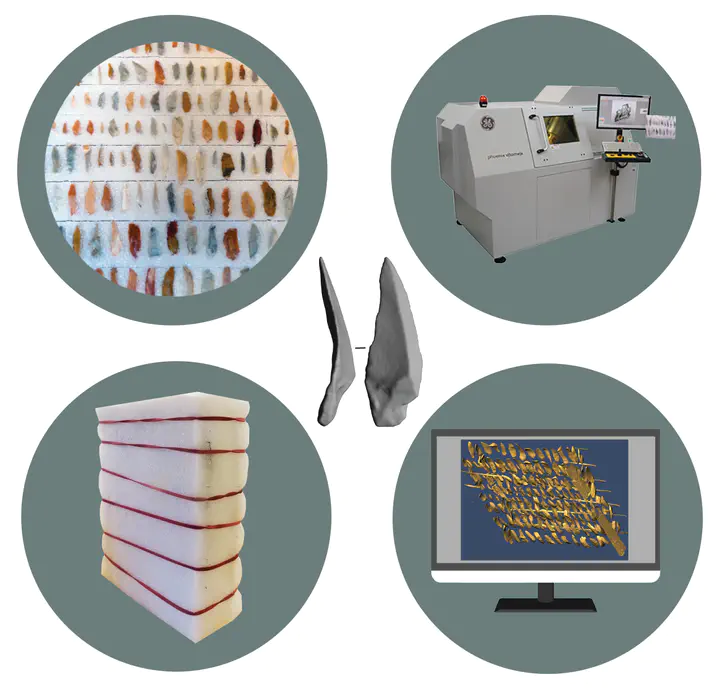Practical and technical aspects for the 3D scanning of lithic artefacts using micro-computed tomography techniques and laser light scanners for subsequent geometric morphometric analysis. Introducing the StyroStone protocol

Abstract
Here, we present a new method to scan a large number of lithic artefacts using three-dimensional scanning technology. Despite the rising use of high-resolution 3D surface scanners in archaeological sciences, no virtual studies have focused on the 3D digitization and analysis of small lithic implements such as bladelets, microblades, and microflakes. This is mostly due to difficulties in creating reliable 3D meshes of these artefacts resulting from several inherent features (i.e., size, translucency, and acute edge angles), which compromise the efficiency of structured light or laser scanners and photogrammetry. Our new protocol StyroStone addresses this problem by proposing a step-by-step procedure relying on the use of micro-computed tomographic technology, which is able to capture the 3D shape of small lithic implements in high detail. We tested a system that enables us to scan hundreds of artefacts together at once within a single scanning session lasting a few hours. As also bigger lithic artefacts (i.e., blades) are present in our sample, this protocol is complemented by a short guide on how to effectively scan such artefacts using a structured light scanner (Artec Space Spider). Furthermore, we estimate the accuracy of our scanning protocol using principal component analysis of 3D Procrustes shape coordinates on a sample of meshes of bladelets obtained with both micro-computed tomography and another scanning device (i.e., Artec Micro). A comprehensive review on the use of 3D geometric morphometrics in lithic analysis and other computer-based approaches is provided in the introductory chapter to show the advantages of improving 3D scanning protocols and increasing the digitization of our prehistoric human heritage.